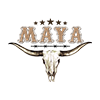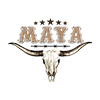T-shirt printing has undergone a remarkable transformation in recent years. What used to be limited to large factories and specialized workshops is now accessible to small businesses and even home creators. At the center of this shift is a standout technology: DTF (Direct to Film) printing. But what exactly is DTF printing, why has it become so popular, and what can you actually do with it? Let’s explore.
What Does DTF Printing Mean?
DTF stands for Direct to Film. It’s a method where a design is printed onto a special film, then transferred onto fabric using heat and adhesive powder. The result? Durable, vibrant prints with sharp detail—compatible with nearly any type of fabric.
Why is DTF Printing So Popular?
✔ Versatile Application: DTF works on cotton, polyester, viscose, or blended fabrics—whether light or dark-colored.
✔ Bright, Crisp Colors: Gradients and fine details are rendered beautifully, making it ideal for complex designs.
✔ Affordable & High Quality: Perfect for small businesses—it’s cost-effective even for short runs.
✔ Can Be Applied at Home: All you need is a heat press or even a household iron, making it popular with hobbyists and pros alike.
How Does DTF Printing Work? Step by Step
DTF printing is as practical as it is powerful. Here’s how it works:
· Design Creation: Use tools like Photoshop or Canva to create your artwork.
· Printing on PET Film: The design is printed using a DTF printer and special inks.
· Powder Application: Adhesive powder is applied over the printed film.
· Curing: The film is heated so the powder binds with the ink.
· Heat Press Transfer: The film is pressed onto the fabric with heat. After a few seconds, peel the film—your design is now transferred.
DTF vs. Other Printing Methods
There are several printing techniques out there—screen printing, sublimation, DTG (Direct to Garment), and HTV (Heat Transfer Vinyl). Here's how DTF compares:
· DTF vs. Screen Printing: Screen printing requires expensive setup and is inefficient for small runs. DTF is perfect for short runs—even one-off prints.
· DTF vs. Sublimation: Sublimation only works on white polyester. DTF works on nearly anything—including dark cotton.
· DTF vs. DTG: DTG struggles with certain fabrics and can be inconsistent. DTF offers reliable results across materials.
· DTF vs. HTV: No weeding, layering, or limited colors—DTF prints are full-color and press-ready.
Who Should Use DTF Printing?
· Small Apparel Brands: Perfect for t-shirts, hoodies, tote bags, and hats.
· Etsy Sellers & Online Creators: Quick production and low costs.
· Schools, Teams & Groups: Great for personalized items in small batches.
· DIY Enthusiasts: Easy and fun to use at home with minimal equipment.
Can I Apply DTF Transfers at Home?
Yes! All you need is a heat press or a regular iron. Just buy quality DTF transfers or create your own with the right equipment.
Home Setup Checklist:
· DTF transfer on PET film
· Cotton or polyester fabric
· Heat press or iron (320°F / 160°C for 8–10 seconds)
· Peel while hot for best results
How to Care for DTF Printed Items
To maintain vibrant, long-lasting prints:
· Wash inside-out
· Use cold water on a gentle cycle
· Tumble dry on low or hang dry
· Never iron directly on the print
Where Can I Buy DTF Transfers?
At MAYA TX, we offer:
· Custom-designed DTF transfers
· Gang sheet printing for bulk efficiency
· Fast nationwide delivery
· Application instructions included with every order
Perfect for:
· Tote bags
· Hats
· Hoodies and sweatshirts
· Baby bodysuits
· Pillowcases
· Activewear
· Promotional products
· Branded uniforms
Tips for Best Results
Avoid humidity and dust: Ensure a clean, dry environment for film handling.
· Follow correct temperature & time: Adjust heat settings based on fabric type.
· Use quality materials: Cheap film and powder can ruin your results.
· Design resolution matters: High-res designs = sharper, more professional prints.
Can You Start a Business with DTF Printing?
Absolutely. Many small entrepreneurs have launched their clothing brands using DTF. With a compact setup, you can:
· Build a custom apparel line
· Partner with local boutiques
· Create personalized gift items
· Sell on Etsy, Instagram, and beyond
· Low startup costs + high profit margin = ideal entry point for creators and side hustlers.
DTF vs. DTG: Key Differences
Feature DTF Printing DTG Printing
Fabric Cotton, polyester, blends Best on 100% cotton only
Color Compatibility Great on both light and dark fabrics Works best on light fabrics
Surface Flexibility T-shirts, hats, bags, more Mostly flat textiles like tees
Durability Very high when applied correctly Varies by fabric and wash cycle
Starting Your Brand with DTF: Beginner Tips
· Find Your Niche: Sportswear? Baby clothing? Know your audience.
· Create Original Designs: Follow trends, but be unique.
· Leverage Social Media: Instagram, TikTok, and Pinterest are powerful for showcasing your work.
· Prioritize Quality: Invest in good film, ink, and powder.
· Test Before Scaling: Print a few samples and test the market before mass production.
With DTF printing, you don’t need a massive investment to get started. You just need a vision—and a partner like MAYA TX to bring it to life.
Need help launching your brand or ordering your first transfers?
Visit www.txmaya.com or contact us at weborders@txmaya.com. We’ll help you print smarter, faster, and better.


















